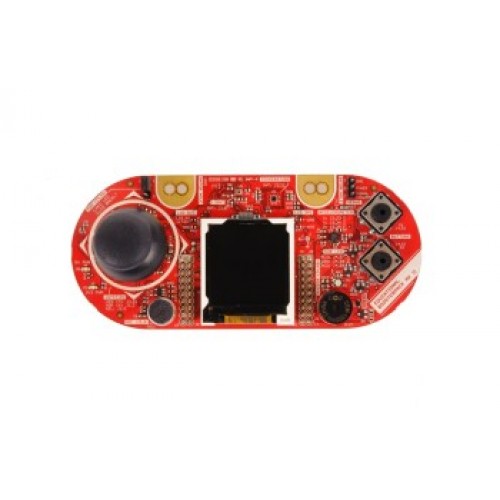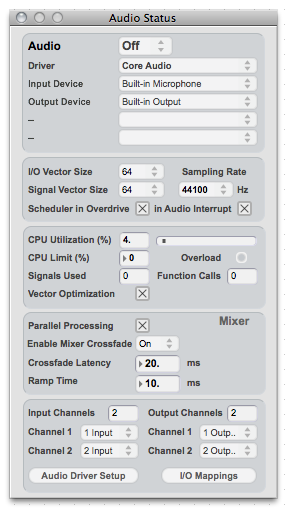- Drivers Pan Jit Input Devices List
- Drivers Pan Jit Input Devices Pdf
- Drivers Pan Jit Input Devices
- Drivers Pan Jit Input Devices Download
1.1. The simplest example¶
In a driver pair, one driver handles general tasks that are common to a whole collection of devices, while the other driver handles tasks that are specific to an individual device. The drivers that handle device-specific tasks go by a variety of names, including miniport driver, miniclass driver, and minidriver. Smooth-running of all your PC devices such as printers, scanners etc. Better all-round performance of your PC due to automatic driver updates which will keep all your devices and your PC in top condition; What are Network Adapter Drivers? A network adapter driver is a program which allows communication between your network connections and your PC. An all-in-one business communication device with an 8' display, audio, and video camera to boost productivity in the modern workplace and home office.
Microsoft Bluetooth Device Driver 9.2.154.0 for Windows 7/Windows 8 64-bit 41,217 downloads. Bluetooth Microsoft. Windows 8 64 bit, Windows 7 64 bit.
Here comes a very simple example of an input device driver. The device hasjust one button and the button is accessible at i/o port BUTTON_PORT. Whenpressed or released a BUTTON_IRQ happens. The driver could look like:
1.2. What the example does¶
First it has to include the <linux/input.h> file, which interfaces to theinput subsystem. This provides all the definitions needed.
In the _init function, which is called either upon module load or whenbooting the kernel, it grabs the required resources (it should also checkfor the presence of the device).
Then it allocates a new input device structure with input_allocate_device()and sets up input bitfields. This way the device driver tells the otherparts of the input systems what it is - what events can be generated oraccepted by this input device. Our example device can only generate EV_KEYtype events, and from those only BTN_0 event code. Thus we only set thesetwo bits. We could have used:
as well, but with more than single bits the first approach tends to beshorter.
Then the example driver registers the input device structure by calling:
This adds the button_dev structure to linked lists of the input driver andcalls device handler modules _connect functions to tell them a new inputdevice has appeared. input_register_device() may sleep and therefore mustnot be called from an interrupt or with a spinlock held.

While in use, the only used function of the driver is:
which upon every interrupt from the button checks its state and reports itvia the:
call to the input system. There is no need to check whether the interruptroutine isn’t reporting two same value events (press, press for example) tothe input system, because the input_report_* functions check thatthemselves.
Then there is the:
call to tell those who receive the events that we’ve sent a complete report.This doesn’t seem important in the one button case, but is quite importantfor for example mouse movement, where you don’t want the X and Y valuesto be interpreted separately, because that’d result in a different movement.
1.3. dev->open() and dev->close()¶
In case the driver has to repeatedly poll the device, because it doesn’thave an interrupt coming from it and the polling is too expensive to be doneall the time, or if the device uses a valuable resource (eg. interrupt), itcan use the open and close callback to know when it can stop polling orrelease the interrupt and when it must resume polling or grab the interruptagain. To do that, we would add this to our example driver:
Note that input core keeps track of number of users for the device andmakes sure that dev->open() is called only when the first user connectsto the device and that dev->close() is called when the very last userdisconnects. Calls to both callbacks are serialized.
The open() callback should return a 0 in case of success or any nonzero valuein case of failure. The close() callback (which is void) must always succeed.
1.4. Inhibiting input devices¶
Inhibiting a device means ignoring input events from it. As such it is aboutmaintaining relationships with input handlers - either already existingrelationships, or relationships to be established while the device is ininhibited state.
If a device is inhibited, no input handler will receive events from it.
The fact that nobody wants events from the device is exploited further, bycalling device’s close() (if there are users) and open() (if there are users) oninhibit and uninhibit operations, respectively. Indeed, the meaning of close()is to stop providing events to the input core and that of open() is to startproviding events to the input core.
Calling the device’s close() method on inhibit (if there are users) allows thedriver to save power. Either by directly powering down the device or byreleasing the runtime-pm reference it got in open() when the driver is usingruntime-pm.
Inhibiting and uninhibiting are orthogonal to opening and closing the device byinput handlers. Userspace might want to inhibit a device in anticipation beforeany handler is positively matched against it.
Inhibiting and uninhibiting are orthogonal to device’s being a wakeup source,too. Being a wakeup source plays a role when the system is sleeping, not whenthe system is operating. How drivers should program their interaction betweeninhibiting, sleeping and being a wakeup source is driver-specific.
Taking the analogy with the network devices - bringing a network interface downdoesn’t mean that it should be impossible be wake the system up on LAN throughthis interface. So, there may be input drivers which should be considered wakeupsources even when inhibited. Actually, in many I2C input devices their interruptis declared a wakeup interrupt and its handling happens in driver’s core, whichis not aware of input-specific inhibit (nor should it be). Composite devicescontaining several interfaces can be inhibited on a per-interface basis and e.g.inhibiting one interface shouldn’t affect the device’s capability of being awakeup source.
If a device is to be considered a wakeup source while inhibited, special caremust be taken when programming its suspend(), as it might need to call device’sopen(). Depending on what close() means for the device in question, notopening() it before going to sleep might make it impossible to provide anywakeup events. The device is going to sleep anyway.
1.5. Basic event types¶
The most simple event type is EV_KEY, which is used for keys and buttons.It’s reported to the input system via:
See uapi/linux/input-event-codes.h for the allowable values of code (from 0 toKEY_MAX). Value is interpreted as a truth value, ie any nonzero value means keypressed, zero value means key released. The input code generates events onlyin case the value is different from before.
In addition to EV_KEY, there are two more basic event types: EV_REL andEV_ABS. They are used for relative and absolute values supplied by thedevice. A relative value may be for example a mouse movement in the X axis.The mouse reports it as a relative difference from the last position,because it doesn’t have any absolute coordinate system to work in. Absoluteevents are namely for joysticks and digitizers - devices that do work in anabsolute coordinate systems.
Having the device report EV_REL buttons is as simple as with EV_KEY, simplyset the corresponding bits and call the:
function. Events are generated only for nonzero value.
However EV_ABS requires a little special care. Before callinginput_register_device, you have to fill additional fields in the input_devstruct for each absolute axis your device has. If our button device had alsothe ABS_X axis:
Or, you can just say:

This setting would be appropriate for a joystick X axis, with the minimum of0, maximum of 255 (which the joystick must be able to reach, no problem ifit sometimes reports more, but it must be able to always reach the min andmax values), with noise in the data up to +- 4, and with a center flatposition of size 8.
If you don’t need absfuzz and absflat, you can set them to zero, which meanthat the thing is precise and always returns to exactly the center position(if it has any).
1.6. BITS_TO_LONGS(), BIT_WORD(), BIT_MASK()¶
These three macros from bitops.h help some bitfield computations:
1.7. The id* and name fields¶
The dev->name should be set before registering the input device by the inputdevice driver. It’s a string like ‘Generic button device’ containing auser friendly name of the device.
Drivers Pan Jit Input Devices List
The id* fields contain the bus ID (PCI, USB, …), vendor ID and device IDof the device. The bus IDs are defined in input.h. The vendor and device idsare defined in pci_ids.h, usb_ids.h and similar include files. These fieldsshould be set by the input device driver before registering it.
The idtype field can be used for specific information for the input devicedriver.
The id and name fields can be passed to userland via the evdev interface.
1.8. The keycode, keycodemax, keycodesize fields¶
These three fields should be used by input devices that have dense keymaps.The keycode is an array used to map from scancodes to input system keycodes.The keycode max should contain the size of the array and keycodesize thesize of each entry in it (in bytes).
Userspace can query and alter current scancode to keycode mappings usingEVIOCGKEYCODE and EVIOCSKEYCODE ioctls on corresponding evdev interface.When a device has all 3 aforementioned fields filled in, the driver mayrely on kernel’s default implementation of setting and querying keycodemappings.
1.9. dev->getkeycode() and dev->setkeycode()¶
getkeycode() and setkeycode() callbacks allow drivers to override defaultkeycode/keycodesize/keycodemax mapping mechanism provided by input coreand implement sparse keycode maps.
1.10. Key autorepeat¶
… is simple. It is handled by the input.c module. Hardware autorepeat isnot used, because it’s not present in many devices and even where it ispresent, it is broken sometimes (at keyboards: Toshiba notebooks). To enableautorepeat for your device, just set EV_REP in dev->evbit. All will behandled by the input system.
1.11. Other event types, handling output events¶
The other event types up to now are:
Drivers Pan Jit Input Devices Pdf
- EV_LED - used for the keyboard LEDs.
- EV_SND - used for keyboard beeps.
Drivers Pan Jit Input Devices
They are very similar to for example key events, but they go in the otherdirection - from the system to the input device driver. If your input devicedriver can handle these events, it has to set the respective bits in evbit,and also the callback routine:
Drivers Pan Jit Input Devices Download
This callback routine can be called from an interrupt or a BH (although thatisn’t a rule), and thus must not sleep, and must not take too long to finish.